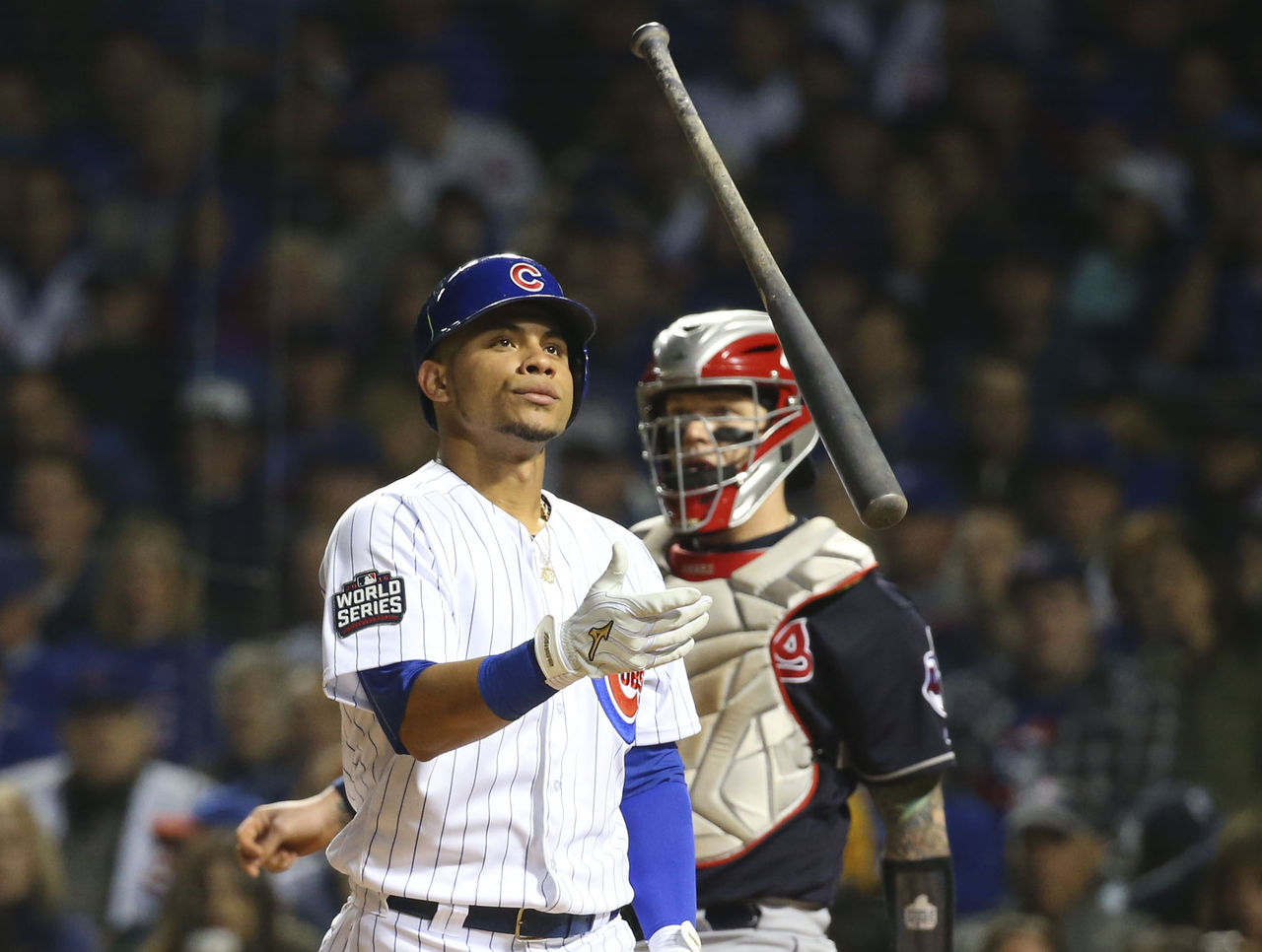Batting order and daily fantasy baseball lineup construction
Follow theScore's fantasy feed on Twitter (@theScoreFantasy) for the latest news, features and more.
There are some facts in baseball which need to be considered when playing daily fantasy. While calculated risks often factor into lineup construction, you still want to put yourself in the best position to see returns on investment. Batting order plays a big part in determining where you'll find value.
Batting order stats via Fangraphs' 'Splits Leaders' section.
Run Like an Antelope
The closer to the top of the batting order a player is, the more at-bats he will receive. A leadoff hitter is far more likely to reach four or five at-bats per game than someone batting in the 7-8-9 slots. Leadoff batters, typically, have better on-base skills and are put in better situations to score runs.
More plate appearances equals more opportunities to get on base. Getting on base more often equals a better chance of scoring runs.
The one downfall of the leadoff hitter is the reduced likelihood of him driving in runs. RBIs remains a counting statistic in fantasy baseball - and the only way to drive someone in when no one is on base is to hit a home run. Leadoff hitters are traditionally more adept at speed skills than power skills (though nine batters hit 20-plus HRs from the lead-off spot in 2016).
Managers construct lineups to maximize scoring, and a fast player with a good OBP will find his way to the top of a lineup. Milwaukee Brewers IF Jonathan Villar stole 58 bases in games where he batted first. While stolen bases aren't a guarantee, leadoff batters are much more likely to run. If the Chicago Cubs start OF Kyle Schwarber atop the lineup, he'll be the exception.

Hit Me With Your Best Shot
RBIs are hardest to come by in the top two slots. Not everyone can be Toronto Blue Jays 3B Josh Donaldson, who recorded 86 of his 99 RBIs hitting in the two-spot. Twenty-eight players hitting in spots 3-4-5 had more RBIs than Donaldson did from batting second.
These numbers hardly guarantee anything, but it's a good barometer to understand what is most likely to occur in a given matchup. Barring opponent proficiency, the big boppers hitting in the heart of the lineup are your go-to power options. While those closer to the bottom aren't powerless voids, they accumulate fewer plate appearances and if the hitters ahead of them have cleared the bases, there will be fewer RBI opportunities.
Your job, especially in cash games, is to maximize your chances. By rostering as many of the big bats as your budget allows, you will find yourself in a more favorable position. But a big bat hitting seventh is not the same as when he bats fourth. Ignoring daily lineups is done at your own peril.
This is the End
The farther you drift from the top half of the lineup, the less likely value will be returned. Of all batters with 200 or more plate appearances in the 7-8-9 spots, only eight had a batting average over .300. In a year where everyone hit home runs, only Danny Espinosa and Marcus Semien launched more than 20 from the bottom third of the order.
No one in the bottom third hit 70 RBIs, and only Elvis Andrus and Leonys Martin stole 20 bases. The numbers alone suggest it's not an impossibility, just far less probable. Compare those numbers to the nine players who stole at least 20 bases from the lead-off or second spot, and the odds are obvious.

We Are Young
This is not to say you should always avoid the bottom third; exploiting matchups is important. Last season, the Chicago Cubs were loaded for bear. This led to rookie C Willson Contreras hitting in the bottom third of the lineup over 29 games and 99 plate appearances. Of all players with 100 or fewer PAs in the bottom third, he had the most home runs.
This may seem like cherry picking (because it is), but rookies will often have to earn their places higher in the lineups. Those who do - you'll need to look at their hitter profiles from Triple-A - will be prime daily fantasy options at a bargain because of their inexperience and their lineup placement.
Players on loaded offenses will also tend to do well in these lower spots, though they will remain less consistent on the whole. Consider a bottom-feeder in a lineup stack against a struggling pitcher (preferably on a team with a questionable bullpen). This will free up enough salary to bolster the rest of your lineup.
HEADLINES
- Sunday Rundown: Key takeaways from Week 17's biggest games
- Luka, LeBron combine for 58 points as Lakers end 3-game skid
- NFL Playoff Picture: Postseason seeds, projected draft order
- Allen blames himself for failed 2-point try at end of Bills loss
- Week 18 schedule: Steelers-Ravens on SNF for AFC North crown